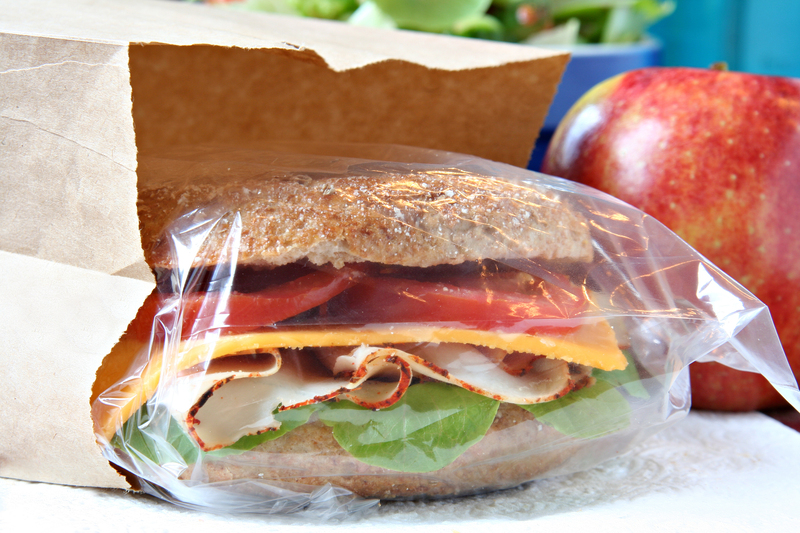Your Go-To Guide for Successfully Storing an Idle Freezer
Posted on 17/05/2025

Your Go-To Guide for Successfully Storing an Idle Freezer
Is your freezer going unused for a stretch of time? Whether you're moving, renovating, or simply not needing that spare appliance right now, storing an idle freezer properly is essential to ensure it works efficiently once you need it again. Neglecting appropriate storage techniques can lead to costly damage, unpleasant odors, and even safety hazards. Our comprehensive guide will walk you through the best practices for both short-term and long-term storage, ensuring your investment stays protected and ready for future use.

Why Is Proper Storage of Your Idle Freezer So Important?
Before you learn how to store a freezer when not in use, let's understand the risks of improper storage:
- Mold and Mildew Growth: Lingering moisture inside the freezer can rapidly lead to mold, which is difficult to remove and hazardous to health.
- Odor Buildup: Trapped food residues or dampness can cause strong odors that persist even after cleaning.
- Mechanical Deterioration: Parts like door seals, gaskets, and the compressor can fail if exposed to unfavorable conditions.
- Pest Attraction: Food remnants and a dark, closed environment can attract unwanted pests.
Step 1: Preparing Your Freezer for Storage
Thoroughly Empty the Freezer
Begin by unplugging the freezer and removing all frozen items. If you plan to use the food elsewhere, make plans for quick transfer to prevent spoilage.
Defrost the Freezer
Allow adequate time for the freezer to defrost completely. This step is crucial, as any leftover ice can melt and lead to moisture-related issues.
- Turn off and unplug the appliance.
- Leave the door open to accelerate defrosting.
- For manual defrost models, place towels underneath to soak up melting ice.
Clean & Sanitize All Surfaces
Once the ice is gone, thoroughly clean the interior:
- Wipe down all internal surfaces with a mild soap and warm water solution.
- For particularly stubborn stains or odors, use a mix of baking soda and water. Avoid harsh chemicals that may linger inside.
- Don't forget the shelves, drawers, and door seals.
- Dry the freezer completely with a soft towel. Any retained moisture can cause mold during freezer storage.
Allow Airflow to Completely Dry
Leave the door ajar for at least several hours, or ideally overnight, to ensure all moisture evaporates. Use a fan in the room for quicker results.
Step 2: Key Tips for Safe Idle Freezer Storage
Store with the Door Slightly Open
This is one of the single most important tips for storing an unused freezer:
- Keep the door propped open at least an inch to allow ventilation. Most freezer doors will stay ajar with a passive wedge like a rolled towel, piece of styrofoam, or a purpose-built door stop.
- This simple step drastically reduces the chances of odor build-up and mold formation.
Choose the Right Storage Location
Storing your freezer in a poor environment can shorten its lifespan or make it unsafe.
- Climate-controlled areas are ideal, such as a basement or insulated garage. Avoid places with extreme temperatures, as both excessive heat and freezing cold can negatively affect electronics and plastics.
- Avoid damp, humid, or direct sunlight areas.
- If storing the freezer outdoors, ensure it's protected from rain and rodents, and elevate it off the ground on pallets or bricks.
Secure Power Cords and Accessories
Neatly wrap the power cord and secure it with a twist-tie or Velcro strap. Avoid wrapping it tightly around the freezer, and do not leave it on the floor where it can be damaged or trip someone.
Protect the Exterior
- Wipe down the outside of the freezer with a gentle cleaner to remove dust, grease, or fingerprints.
- Avoid plastic wrap--which can trap moisture against the surface and cause rust. Instead, use a breathable fabric cover or old sheet as a dust cover.
Level and Stabilize the Freezer
Place the freezer on a flat, stable surface to avoid stress on components and prevent tipping. This is especially crucial for upright freezer storage.
Step 3: Advanced Tips for Long-Term Freezer Storing
Consider Interior Desiccants
Place moisture-absorbing products (desiccants) such as baking soda, silica gel packs, or open boxes of activated charcoal inside the freezer to capture residual humidity and odors.
Check Freezer Seals and Gaskets Periodically
Inspect the rubber gaskets and door seals before storage. Clean and condition them with a small amount of petroleum jelly to prevent cracking or drying out.
Prevent Rodent and Pest Intrusion
If storing in a basement, garage, or shed, ensure the area is pest-proof. Rodents can chew through cable insulation or seals if attracted by lingering food smells.
Periodic Inspection
Whether you're storing your upright freezer or a chest model, don't just forget about it:
- Every 1-2 months, inspect for odors, pests, or any moisture accumulation.
- Check fittings, hinges, and seals for signs of wear or damage.
Special Considerations for Moving and Transporting Your Freezer
If you are storing your freezer because of a move, take extra precautions:
- Allow Compressor Oil to Settle: After moving, let the freezer sit upright for 24 hours before plugging it back in to allow the compressor oil to settle.
- Secure Interior Parts: Take out all shelves, baskets, and trays or secure them with tape to prevent internal damage.
- Protect Corners: Wrap the freezer with moving pads or bubble wrap to prevent dents and scratches.
- Keep Upright: Always transport and store the freezer upright to avoid compressor damage.
Short-Term vs. Long-Term Freezer Storage
There are some differences depending on the storage length:
-
Short-Term Storage (under 1 month):
- Quick defrost, clean, dry, and keep the door ajar.
- Store in a reasonably temperate and dry place.
- No need for desiccants or full dust covers.
-
Long-Term Storage (over 1 month):
- Clean and dry extra thoroughly.
- Use moisture absorbers for extra protection.
- Cover for dust protection and periodically inspect.
Common Mistakes When Storing a Freezer (and How to Avoid Them)
- Leaving Moisture Inside: Even a small amount of trapped water can breed bacteria. Always dry thoroughly.
- Forgetting to Prop the Door Open: This almost always leads to bad smells or mold.
- Using Plastic Wraps: These can trap condensation and unintentionally promote rust and corrosion.
- Storing in Unprotected Outdoor Areas: Exposure to the elements will damage the appliance, regardless of how short the period.
- Ignoring Periodic Inspection: Out of sight should not mean out of mind. Even a stored freezer may develop issues over time.
How to Reactivate and Use Your Stored Freezer
Ready to bring your freezer back into action? Here’s your checklist:
- Remove any covers, wedges, or desiccants placed for storage.
- Clean the interior one more time with a mix of baking soda and water.
- Check that the power cord is undamaged and properly connected.
- Let the freezer stand upright for several hours if it has been moved, allowing oil to return to the compressor.
- Plug in and monitor for noises or error lights. Let it run empty for a few hours to reach the proper freezing temperature before loading food.
Frequently Asked Questions About Storing Idle Freezers
1. Can I store my freezer outside?
It's not recommended unless you have a weatherproof, shaded, and pest-proof setup. Freezers are best stored in sheltered, climate-stable environments.
2. Do I have to clean my freezer if it was already empty?
Absolutely. Even if empty, odors or bacteria from prior use may linger. Always clean and dry before storage.
3. Should a freezer be stored on its side?
No. Freezers must always be stored upright to avoid compressor damage and preserve internal oil flow.
4. How do I prevent rodent infestation?
Store in a sealed area, remove all food traces, seal cracks in the room, and inspect periodically.
5. Is it better to leave my freezer plugged in when not in use?
Generally, no. There's no benefit to running an empty freezer, and it wastes electricity. Disconnect it after defrosting, cleaning, and drying.
6. How do I remove odors left behind by storage?
Clean with a mix of baking soda and water, or leave an open box of baking soda inside for a day after cleaning.
Conclusion: Keep Your Idle Freezer Fresh and Functional
By following the proper storage steps for your idle freezer--emptying, defrosting, thorough cleaning, propping the door open, and protecting from environmental extremes--you'll dramatically increase its longevity and ensure optimal function once back in use. Whether it's a chest, upright, or compact model, these best practices for idle freezer storage apply to all, safeguarding your appliance and your investment. Make it a routine to check your stored freezer every few weeks, and you'll enjoy fresh, odor-free freezing for years to come!
Protect your investment by using these actionable tips for safe and successful freezer storage. Share your own experiences or questions about storing freezers in the comments below!



